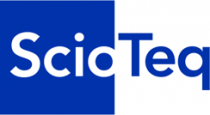The Worldwide Horizontal Directional Drilling Industry is Expected to Reach $11.6 Billion by 2027 - ResearchAndMarkets.com
The "Global Horizontal Directional Drilling Market By Component, By Machine Type, By Machines Parts, By Rig Type, By Rigs Sales Type, By Application, By End-use, By Regional Outlook, Industry Analysis Report and Forecast, 2021-2027" report has been added to ResearchAndMarkets.com's offering.
The Global Horizontal Directional Drilling Market size is expected to reach $11.6 billion by 2027, rising at a market growth of 5.8% CAGR during the forecast period.
Horizontal drilling is significantly easier and less harmful to the environment than traditional vertical alignment. It may be used to construct cables, canals, short-distance pipelines, and long-distance works even at great depths. The development of advance mobile communication technologies, like 4G and 5G, has raised the demand for system transfer specialists. Consequently, horizontal directional drilling sets are being used more often to lay new transmission lines.
Furthermore, the increased need for effective distribution of natural gas and electricity from upper and intermediate pipelines is likely to fuel the growth of the horizontal drilling machine services market. Significant volumes of oil and gas may be retrieved from ponds to depths of 10,000 feet using HDD rigs and other equipment while having a minimal impact on the environment. Furthermore, because HDD settings take up less space, they are suitable for projects that are positioned in densely populated locations and must be completed in a brief span of time.
The primary reasons driving the growth of the horizontal directional drilling market are increased urbanisation and a faster pace of industrialisation. Urbanization is expected to raise consumer demand, which is expected to lead to an expansion in the manufacturing industry, driving up energy consumption. According to the Central Intelligence Agency, by year2040, the urban population will be nearly double that of the rural population. Furthermore, horizontal directional drilling gives greater precision than vertical moving methods. This aspect is expected to boost the market over the projected period as well.
COVID-19 Impact Analysis
The COVID-19 pandemic caused a brief halt to horizontal directional drilling activity at multiple locations across a variety of sectors due to rigorous government lockdown measures designed to halt the disease's spread. The oilfield industry experienced significant operational challenges as businesses temporarily ceased upstream and downstream operations, resulting in a sharp drop in oil and gas output.
Furthermore, oil prices fell as a result of a considerable reduction in the frequency of transportation worldwide, after a price war between the United States, Saudi Arabia, and Russia. As a result, incumbents in horizontal directional operations and the machine sector experienced a drop in demand. Continuous initiatives taken by global governments to minimize the consequences of the pandemic on oil and gas exploration businesses, on the other hand, are projected to allow for a rebound in the horizontal directional drilling industry in the near future.
Market Growth Factors:
Growing energy demand
With the United Nations estimating a rise in global population from 6.7 billion in the year 2011 to 8.7 billion by the year 2035, demand for energy is expected to rise significantly over the time. Population expansion, as well as rising living standards in many emerging nations, will drive up energy consumption significantly. Over 70% of the growing energy demand comes from developing countries, primarily China and India. According to United Nations Organization (UNO) forecasts, urbanization will continue to rise, from 52 percent in 2011 to 62 percent in 2035, and reach 70 percent globally by 2050.
Expansion of the telecommunication industry
The telecommunications sector's extensive deployment of fiber optic cables in offshore and onshore locations to deliver 4G and 5G networking services is increasing the development possibilities of these systems. Drilling for the surveying, design, and construction of underground cables for telecommunication electrical systems is a novel technology that has been created for the underground installation of pipes.
Marketing Restraining Factor:
Stringent regulatory policies
The government's laws governing the development of oil and gas fields are quite stringent. On May 22, 2013, for example, the European Union (EU) Parliament enacted a new regulation on the safety of oil and gas activities. Before beginning any drilling activities in EU seas, oil and gas firms must file a detailed study on potential dangers, according to the legislation. They must also give internal emergency response plans that outline all available equipment and resources, as well as what measures is expected to be taken in the event of an accident.
Scope of the Study
Market Segments Covered in the Report:
By Component
- Machines and
- Services
By Machine Type
- Rotary Steerable System and
- Conventional
By Machine Parts
- Rigs
- Pipes
- Bits
- Reamers and
- Others
By Rig Type
- Midi
- Mini, and
- Maxi
By Rigs Sales Type
- New sales and
- Aftermarket
By Application
- Onshore and
- Offshore
By End Use
- Oil & Gas Extraction
- Utility
- Telecommunication and
- Others
By Geography
- North America
- Europe
- Asia Pacific
- LAMEA
Key Market Players
- Nabors Industries Ltd.
- NOV, Inc.
- Herrenknecht AG
- Vermeer Corporation
- Xuzhou Construction Machinery Group Co., Ltd.
- The Toro Company
- Halliburton Company
- Schlumberger N.V.
- Weatherford International PLC
- Baker Hughes Company
For more information about this report visit https://www.researchandmarkets.com/r/2mdrnx
View source version on businesswire.com: https://www.businesswire.com/news/home/20220315005746/en/





